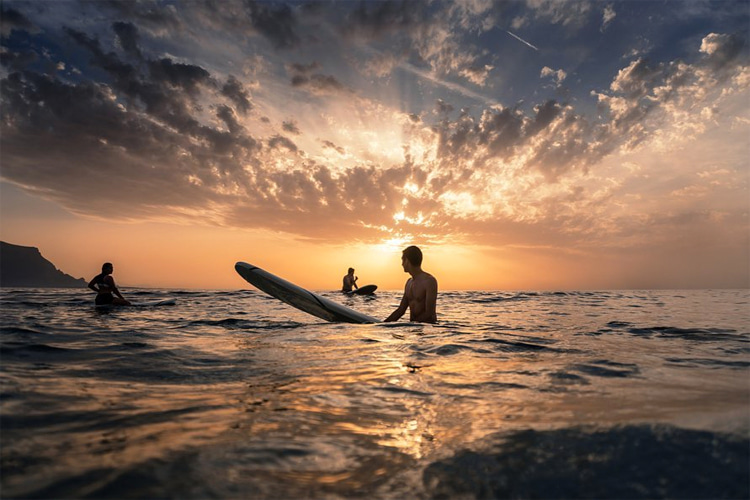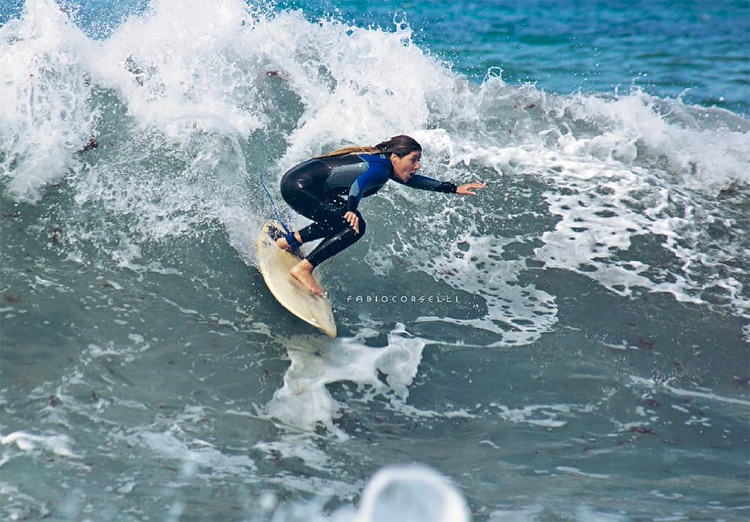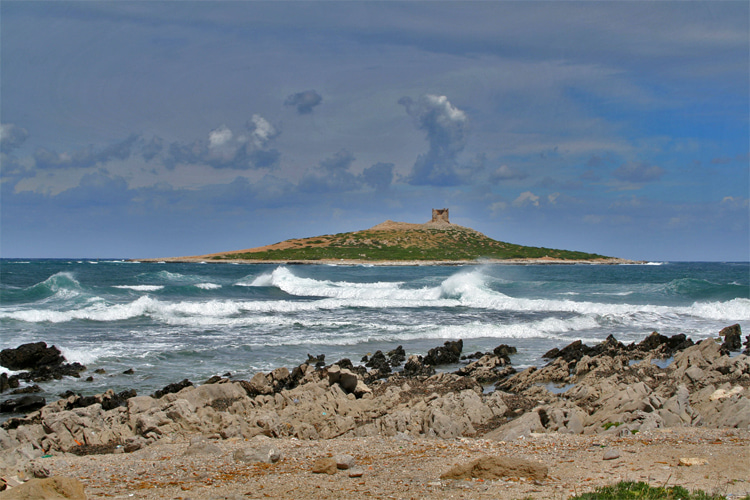Riding a 9-foot board means performing basic surfing maneuvers – such as the cutback and bottom turn – with a completely different technique from the one commonly used with a shortboard.
For example, a longboarder must adapt the take-off to the type of wave he is about to ride.
Today, the most popular longboarding styles are classic/traditional (nose riding), high-performance, and a hybrid style that blends both.
So, what characterizes the classic/traditional style? The shape and size of the board and the different things that you can do on it.
In longboarding’s case, “plastic poses,” which derive from the Hula, an ancient Hawaiian dance.
Interestingly, the dancer who surfs the wave and performs these elegant poses is telling a love story – the love for Creation, Mother Nature, and the ocean.
The Hula dance inspires the most common maneuvers seen in longboard contests. They are the Hang Five, Hang Ten, Mahalo, cross-stepping, and backside cross-stepping.
Let’s take a look at each one of these maneuvers.
Hang Five consists of walking up the board and moving forward all the body’s weight until the surfer hangs his toes over the edge of the longboard.
The Hang Ten is similar, but with both feet side by side, and all ten toes hanging on the longboard’s tip.


Mahalo – a Hawaiian word meaning “thank you” – is a Hang Ten performed but facing backward.
Once the surfer reaches the nose of the board, he turns his back to the beach, watching the ocean.
Then, with his hands joined together, he or she thanks Kai – the ocean – by bowing the head over the tip of the hands as a sign of immense gratitude.
Cross-stepping on the board is the alignment with the board’s stringer.
It epitomizes the elegance typical of the classic style and often finishes with a Hang Five or Hang Ten.
Backside crossing-stepping is the same body movement, but performed backward, i.e., from the nose toward the tail.
It is often performed quickly, right on time to perform shooting maneuvers such as the cutback or bottom turn.
Unlike classic logging – which uses a 9-foot plus, single fin longboard with a narrow tail and a wide, concave nose – the high-performance style uses a board that is similar in shape to a standard shortboard, but longer.
This allows surfers to perform all the maneuvers traditionally seen in shortboard surfing and surf bigger waves.
As a general rule of thumb, the classic/traditional riding takes place in three-to-five-foot high waves.
When we talk about classic single-fin longboards, the perfect wave is a long and smooth roller that slowly and steadily crumbles.


Log Life in the Mediterranean Sea
Generally speaking, the length of a Mediterranean wave – or its extension measured horizontally – increases proportionally to its size.
The challenges arise from the weather conditions in which consistent waves are generated.
In a closed basin like the Mediterranean Sea, the sea is often rough when there’s a little more size.
And between one set of waves and another, the wave motion keeps moving, and we get these surface ripples underwater that, in the form of currents, run opposite to the wave motion.
This makes it extremely difficult to draw a clear and flowy line on the wave a longboarder is dancing on.
One of the aspects that, in my opinion, discourage newbies from getting into the sport is paddling out-the-back and getting back to the shore.
The technique for getting past the breaking waves and whitewater rumble is known as the turtle roll technique.
The turtle roll technique consists of paddling towards the broken wave’s foam and turning the board upside down before making contact with the whitewash.
With the fins facing up, the nose kept low, and the surfer below the board, the wave will pass over the board.
Longboarding in Sicily
Most of the slow-crumbling longboard waves we get in Sicily, Italy, are located in the island’s wild south.
But generally, after a big storm, and with a bit of luck, consistency, and absence of wind, you can also find great longboarding waves in Isola delle Femmine.
The Sicilian spot is located just 12 kilometers north from the capital of the island, Palermo.
Isola delle Femmine is a beach break that will let you enjoy classic longboard sessions with waves up to six or seven feet.
When it gets bigger than that, waves tend to close out.
It’s the perfect place for those who appreciate that hybrid style halfway between classic and high-performance longboarding.
It is not uncommon in Isola delle Femmine that, after some cross-steps, a surfer finds himself inside a perfect, fast mini barrel of crystal blue water, before ending the ride near the shore with a Mahalo pose.
How does it feel to be a Mediterranean Sea surfer?


Well, most of the surfers get a bit sad and bored during the summer because we have many flat days.
The most consistent waves arrive in October, and we always hope that the next swell is better, more reliable, and without onshore winds.
Italian surfers tend to try to make two or three surf trips to the coastline per year.
When it comes to traveling to ocean waves and living the dream as a professional surfer and competing in European contests, it’s tough.
We don’t have access to a budget that allows us to travel that much, and public transportation doesn’t allow us to carry longboards.
And if you add airline fares (and a pandemic), it becomes nearly impossible to visit world-class longboard destinations like Indonesia or Canary Islands.
Hopefully, Sicilian surfers might be lucky enough to get a wave pool that allows us to enjoy perfect waves under the island’s hot sun and beautiful palm trees.
Anyway, if you can’t surf a wave, then dance.
I like to think that, despite everything, there is always a wave waiting for us to dance somewhere in the ocean.
Words by Alessandra Gargano McLeod | Longboard Surfer





Recent Comments